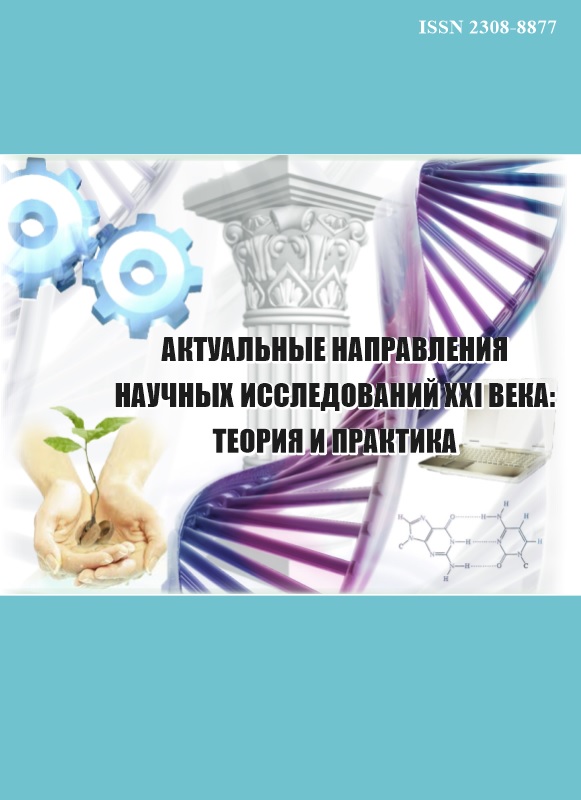Russian Federation
Voronezh, Russian Federation
UDC 33
Today, the forest industry is experiencing stress situations associated with the need for a global reorientation of financial, economic and production activities to new market niches, the search for new partners and innovative production technologies. The financial crisis and sanctions from unfriendly countries have slowed down the implementation of plans and programs for the implementation of innovative activities of enterprises. One of the problems of maintaining the required level of innovative development of forestry enterprises has become the problem of attracting investment capital and credit resources to finance and implement innovations, including technological and environmental ones. The author's model of key conditions that impede innovative development and the formation of innovative infrastructure for forestry enterprises is proposed. The article analyzes the degree of depreciation of the main backgrounds and the dynamics of their financing at forestry enterprises. Attention is paid to attracting investment in the context of forestry industries, the level of financing of innovative activities and attracting investment in fixed assets by forestry enterprises implementing innovative development. The article presents the results of the assessment of the implementation of innovations by their types, in the context of all production areas for a five-year period. Based on the analysis and assessment, a model of interaction between participants implementing innovative development of forestry enterprises in crisis and sanction conditions has been formed. The main result of the study is a mechanism for ensuring the necessary level of innovative development of forestry enterprises in difficult economic conditions, on the basis of which the author's methodology for assessing the necessary level of innovative development of forestry enterprises is proposed.
Innovative development, forestry complex, technological innovations, crisis conditions, innovations, investments, environmental innovations
Введение
Современные производственные предприятия вынуждены функционировать в сложных экономических условиях. Влияние различных кризисных ситуаций оказывает значительное воздействие на финансово-экономическую и производственную деятельность. Что, в свою очередь, негативно отражается на внедрении в производственный процесс инноваций, современных производственных технологий и приобретения новейшего технологического оборудования. Еще в 2020 году все промышленные предприятия столкнулись с коронавирусной пандемией, когда большинство сотрудников, в том числе, и производственных, пришлось отправлять на удаленку или на карантин, ограничения продлились вплоть до 2022 года. Карантинные мероприятия сопровождались закрытием большинства общественных мест, магазинов и шоу-румов производителей промышленной продукции. Наблюдался резкий спад промышленного производства, повышение цен готовой продукции, вызванное ростом производственных и логистических издержек. Но в пандемийный период наблюдались и положительные тенденции, большинство коммерческих структур вынуждены были в срочном порядке организовывать интернет-торговлю, с возможностью удаленных продаж и бесконтактной доставки промышленной продукции потенциальному потребителю.
Только за второй квартал 2020 года наблюдалось снижение заготовки древесины на лесосеках на 10% и также снижение производства пиломатериалов на 9%, больше всего пострадало фанерное производство и древесных плит на 27-30%. Но целлюлозно-бумажная промышленность показала быстрый рост в сегменте производства тарного и упаковочного картона, вызванного бурным и резким развитием интернет-торговли. Но начиная с конца 2020 года и первой половины 2021 годы наблюдался значительный рост лесопромышленного производства, вызванный повышением спроса в секторе деревянного домостроения и мебельной продукции. Это вызвано тем, что осуществлялась государственная поддержка на выдачу льготных ипотечных займов и иных мер поддержки населения. Так даже во второй половине 2021 года наблюдался дефицит ДСТп.
1. Statisticheskie dannye Federal'noy sluzhby gosudarstvennoy statistiki RF (Rosstat): [Elektronnyy resurs], rezhim dostupa: http://www.gks.ru/ (data obrascheniya: 09.07.2024)
2. Strategiya razvitiya lesnogo kompleksa Rossiyskoy Federacii do 2030 goda. [Elektronnyy resurs]. URL: https://docs.cntd.ru/document/573658653 (data obrascheniya: 09.07.2024).
3. Roslesinforg: v Rossii pobit rekord po investiciyam v proizvodstvo cellyulozno-bumazhnoy produkcii i mebeli [Elektronnyy resurs], rezhim dostupa: ttps://roslesinforg.ru/news/all/ (data obrascheniya: 09.07.2024).
4. Gerhard Weiss, Alice Ludvig, Ivana Živojinović, Four decades of innovation research in forestry and the forest-based industries – A systematic literature review, Forest Policy and Economics, Volume 120, 2020, 102288, https://doi.org/10.1016/j.forpol.2020.102288.
5. Dolinskaya A.Yu. Upravlenie innovacionnym razvitiem predpriyatiya na osnove strategiy razvitiya innovacionnogo potenciala // Vestnik Yuzhno-Ural'skogo gosudarstvennogo universiteta. Seriya: Ekonomika i menedzhment. 2019. T. 13. № 2. S. 87-95.
6. aulo N. Figueiredo, Marcela Cohen, Explaining early entry into path-creation technological catch-up in the forestry and pulp industry: Evidence from Brazil, Research Policy, Volume 48, Issue 7, 2019, Pages 1694-1713, https://doi.org/10.1016/j.respol.2019.03.017.
7. Morkovina S.S., Panyavina E.A., Ceplyaev A.N. Innovacionnye tehnologii v lesnom hozyaystve regionov: ekonomicheskiy aspekt // Vestnik Akademii znaniy. 2020. № 41 (6). S. 206-215.
8. Claudia Sattler, Using Process Net-Map to analyze governance innovations in the forestry sector, Ecosystem Services, Volume 55, 2022, 101433, https://doi.org/10.1016/j.ecoser.2022.101433.
9. Zoran Poduška, Jelena Nedeljković, Dragan Nonić, Tatjana Ratknić, Mihailo Ratknić, Ivana Živojinović, Intrapreneurial climate as momentum for fostering employee innovativeness in public forest enterprises, Forest Policy and Economics, Volume 119, 2020, 102281, https://doi.org/10.1016/j.forpol.2020.102281.
10. Panyavina E.A., Morkovina S.S., Ceplyaev A.N. Ekonomicheskaya ocenka innovacionnoy tehnologii "Pot-in-pot" dlya celey lesovosstanovleniya // Lesotehnicheskiy zhurnal. 2020. T. 10. № 3 (39). S. 185-196.
11. Martina Štěrbová, Jozef Výbošťok, Jaroslav Šálka, A classification of eco-innovators: Insights from the Slovak forestry service sector, Forest Policy and Economics, Volume 123, 2021, 102356, https://doi.org/10.1016/j.forpol.2020.102356.
12. Sokolova A.P., Bondareva D.V. Innovacii v sovremennom mire kak istochnik razvitiya ekonomiki // Vestnik Altayskoy akademii ekonomiki i prava. 2019. № 8-2. S. 182-190.
13. Vlasova V.V., Gohberg L.M., Gracheva G.A., Ditkovskiy K.A., Kuznecova I.A., Martynova S.V., Ratay T.V., Rosoveckaya L.A., Rud' V.A., Fridlyanova S.Yu. Indikatory innovacionnoy deyatel'nosti: 2022 // Statisticheskiy sbornik / Moskva, 2022.
14. Solov'eva T.N., Zyukin D.A., Matushanskaya E.E. Aktivizaciya innovacionnyh processov v rossiyskoy ekonomike na primere otdel'nyh otrasley // Azimut nauchnyh issledovaniy: ekonomika i upravlenie. 2020. T. 9. № 1 (30). S. 317-321.










